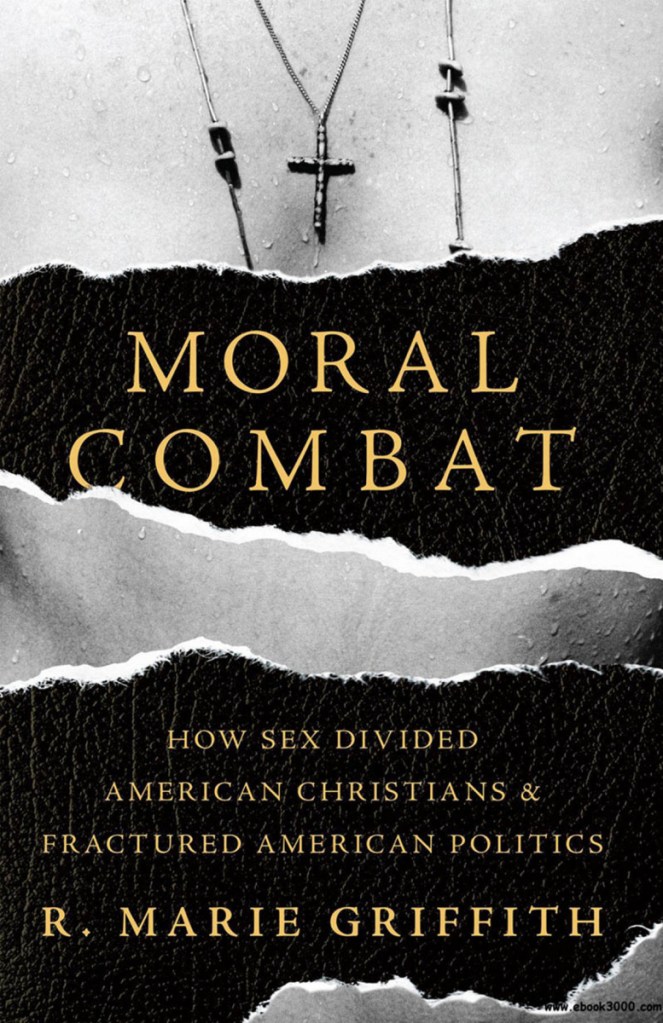Late last fall, as the #MeToo movement gained traction, a Time magazine poll found that Democrats were more likely to believe women’s allegations of sexual harassment than their Republican counterparts, and that Republicans were twice as likely to think that the men in question were being treated unfairly by the media; more than half of the Republican respondents saw the movement as a “distraction.” December also brought a sharp contrast between the resignation of Sen. Al Franken (D-Minn.) after accusations of inappropriate sexual behavior and President Trump’s support for Republican Senate candidate Roy Moore, who faced allegations of sexual conduct with a minor.
Partisan responses to sexual harassment are nothing new. In her magisterial new book, “Moral Combat: How Sex Divided American Christians and Fractured American Politics,” R. Marie Griffith takes us back to the 1990s and incisively compares two moments from that era: Anita Hill’s testimony during Justice Clarence Thomas’ confirmation hearings and Paula Jones’s allegations against President Bill Clinton.
When conservative Christian leaders pilloried Hill but rallied to Jones’ defense, they “flipped from merely opposing ‘sexual harassment’ as an idea cooked up by lefty feminists to deploying it selectively in defense of Christian virtue.” Griffith’s observations are eerily prescient. Whether one tolerates misogyny or apologizes for it is a highly variable thing. Where were the conservative Christians calling for Moore’s downfall the way they called for Clinton’s?
“Moral Combat” is an impressive history of the massive fault line running through American history and politics: namely, sex. In eight rich chapters that span a century, Griffith traces the ridge where the tectonic plates of very different kinds of Christians have abutted, telling the “story of the steady breakdown, since the early twentieth century, of a onetime Christian consensus about sexual morality and gender roles and of the battles over sex among self-professed Christians – and between some groups of Christians and non-Christians – that resulted.”
The book’s vast scope is humanized through Griffith’s artful use of key figures to anchor each chapter. It begins with Margaret Sanger and the birth-control fights of the 1920s, then moves through censorship wars and the spiritual mysticism of novelist D.H. Lawrence; anti-miscegenation statutes and the groundbreaking work of anthropologist Ruth Benedict; Alfred Kinsey’s work on female sexuality; and, bringing us to the late 1960s, Mary Steichen Calderone’s advocacy for sex education and Billy James Hargis’ vehement opposition to it.
The abortion wars of the 1970s and 1980s are refracted through the story of Howard Moody, a Baptist minister who supported women seeking safe abortions. After a foray into the sexual harassment scandals of the 1990s, Griffith parses the breakneck pace of changes in LGBTQ rights (and rites) in the early 2000s by focusing on Gene Robinson, the first openly gay bishop in the Episcopal Church.
The long reach of “Moral Combat” demonstrates that “the virtual civil war that has come to seem such a disheartening and permanent part of our nation’s social and political fabric” has a long, nuanced history. It is a history in which Kinsey received fan mail from ministers, and leaders of many religious groups advocated for the right to safe abortions. It is also one in which New York pastor John S. Wimbish declared that Kinsey’s report “constitutes an attack on our American way of life more overwhelming than that of Pearl Harbor” and in which the Rev.Jerry Falwell famously blamed the Sept. 11, 2001, attacks on “the pagans, and the abortionists, and the feminists, and the gays and the lesbians.” Griffith clearly demonstrates that American history is not a story of religion vs. sexual freedom. Rather, it is one of extraordinarily varying religious approaches to such freedoms.
With its crisp prose and lively quotations, “Moral Combat” is accessible for a wide readership. It is also a critical scholarly contribution to the intersecting histories of sex, race, politics and religion in the United States.
My chief concern about this otherwise fantastic work is that it is set up as a kind of declension narrative: itself a popular American Christian genre as old as the republic. Further, despite the book’s nuanced readings, the focus on conflict could lead some readers to reduce the story to one of sex-positive Christians vs. sex-negative ones. To be clear, this is not Griffith’s intent. The voices of her diverse cast of characters shine forth in moments of ambiguity and richly drawn portraits that belie easy caricatures.
If anything, binaries emerge from “Moral Combat” because some of the actors portrayed within it luxuriate in the rhetoric of battle. Terms such as “militant feminists” and “femi-Nazis” jump out from the page. The virulent hate mail sent to Calderone in the late 1960s is telling. Enraged by her advocacy for sex education in Southern California, opponents called her “a reptile of a woman” and a “misfit prostitute of hell.”
This level of vitriol – and worse – is familiar to most Twitter users today, particularly to female activists. Like sexual harassment and partisan bickering, it is not new. If Griffith depicts a war, perhaps it is because the evidence points that way.
The question moving forward, then, is this: Is there a way out of our polarized national struggle over sex? As the book’s epilogue attests, the 2016 election was the zenith of this conflict, a battle over “the candidates’ very identities, embodying the culture war over sexuality in the most literal way.” One year later, the pendulum on sexuality in America keeps swinging. Sometimes it seems to shift in a single news cycle. In tracking its perennial arcs, Griffith’s history reveals the high stakes and human costs of these battles.
Send questions/comments to the editors.



Comments are no longer available on this story